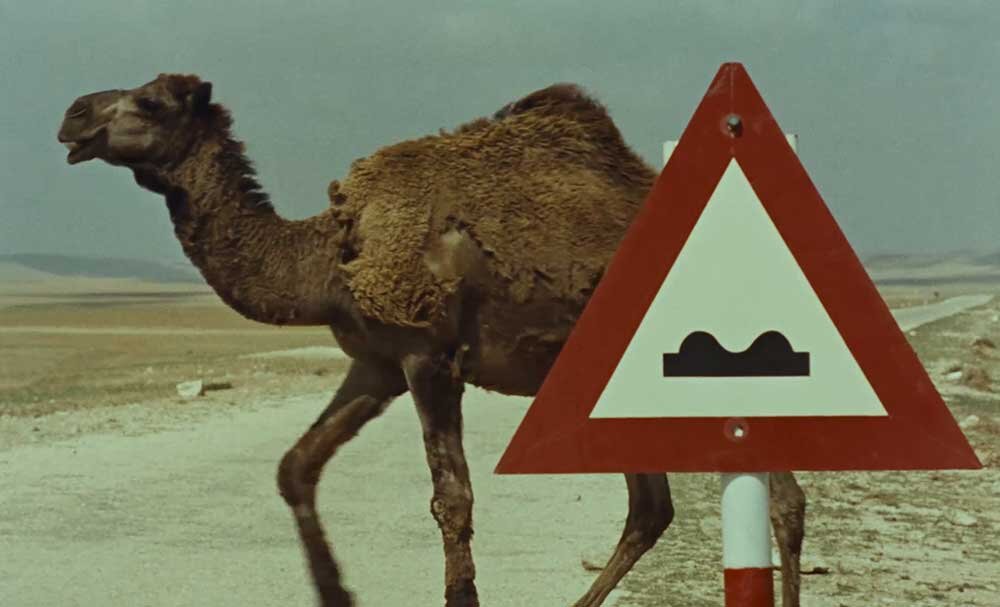IAF to show Chris Marker’s “Description of a Struggle”

TEHRAN – The Iranian Artists Forum (IAF) in Tehran will screen the documentary “Description of a Struggle” directed by Chris Marker on Sunday.
The movie will be shown at 6 p.m. and will be followed by a review session in the presence of film critic Amin Hamikhah, ILNA reported.
In the 1960 French film, Marker’s idiosyncratic style, combining location footage with archival material, builds a complex and personal portrayal. Israel’s demography is explored, from the kibbutzim to the Arab minorities, the Orthodox Jews, and the tourists.
Working primarily in the arena of nonfiction, Marker rejected conventional narrative techniques, instead staking out a deeply political terrain defined by the use of still images, atmospheric soundtracks, and literate commentary.
The “struggle” in the title does not refer to the tank-and-artillery variety, but to the inner struggle of Israeli citizens to adapt to a new view of themselves, in a new country.
A meditative commentary on how a new state is built hovers over elusive impressionist images, hiding opportunities to make discoveries, which, albeit short-lived, are penetrating the limits of illusion. A literary essay is combined with a documentary image to make a hypnotic film, which was awarded Golden Bear at the Berlin Film Festival.
Memories are at the core of Chris Marker’s work. The vague connections between recorded history, communal memory, and personal reminiscences, the myriad of political factors, ideological agendas, and cultural filters that invariably shape our body of recollections, the ethical dilemmas and psychological repercussions triggered by the traumatic events of the past, all emerge as intriguing poetic motifs in his films.
The film was made at a time when the Israeli state was 12 years old, and borrows its title from Kafka’s short story. It explores the historical, social, cultural, and ethical contexts at the heart of Israel’s existence, and the impact of the tragic and not-so-distant past on the collective psyche of the nation.
Marker uses highly stylized material to magnify the seemingly insignificant details and examine the fragile bonds between memory, history, and identity. He explores the miracles and paradoxes of Israel’s existence using black-and-white and color film stock and the combination of poetic yet detached voiceover narration and diegetic sound. He looks for the signs of Israel’s existence in the everyday lives of locals; the dynamic meetings of kibbutznicks, the bemused looks of children in the Mea Sharim quarter, the prattle and cacophony of the marketplace, the camels lethargically crossing the road, the owls inhabiting the “Biblical Zoo” in Jerusalem. And, as the film “tunnels into the complex strata of Israel’s history, invoking the need for an x-ray vision that can penetrate and decipher the physical and historical landscape”, Marker gradually intertwines the seemingly disconnected but deeply engaging voices resonating through the dynamic and reserved, joyful yet deeply traumatized Israeli society.
Most film scholars and reviewers agree that in Marker’s elegiac, reflexive works, subtext is everything. The filmmaker positions the viewer amidst the transient and disorienting world of the Middle East, and pointedly reminds the audience that his documentary subjects are constantly surrounded by fragments of history. He suggests that the citizens of the young state of Israel, scarred by their horrific past and hopeful about the future, are particularly sensitive to injustice. The signs of the past are revealed at every step of Marker’s journey; from kibbutz meetings, that ultimate demonstration of participative democracy (“How long will their purity last?”), to the careless enjoyment of Israeli teenagers and beachgoers, to the Bedouin gathered in small circles, resting on their journey through the desert.
SS/
Leave a Comment